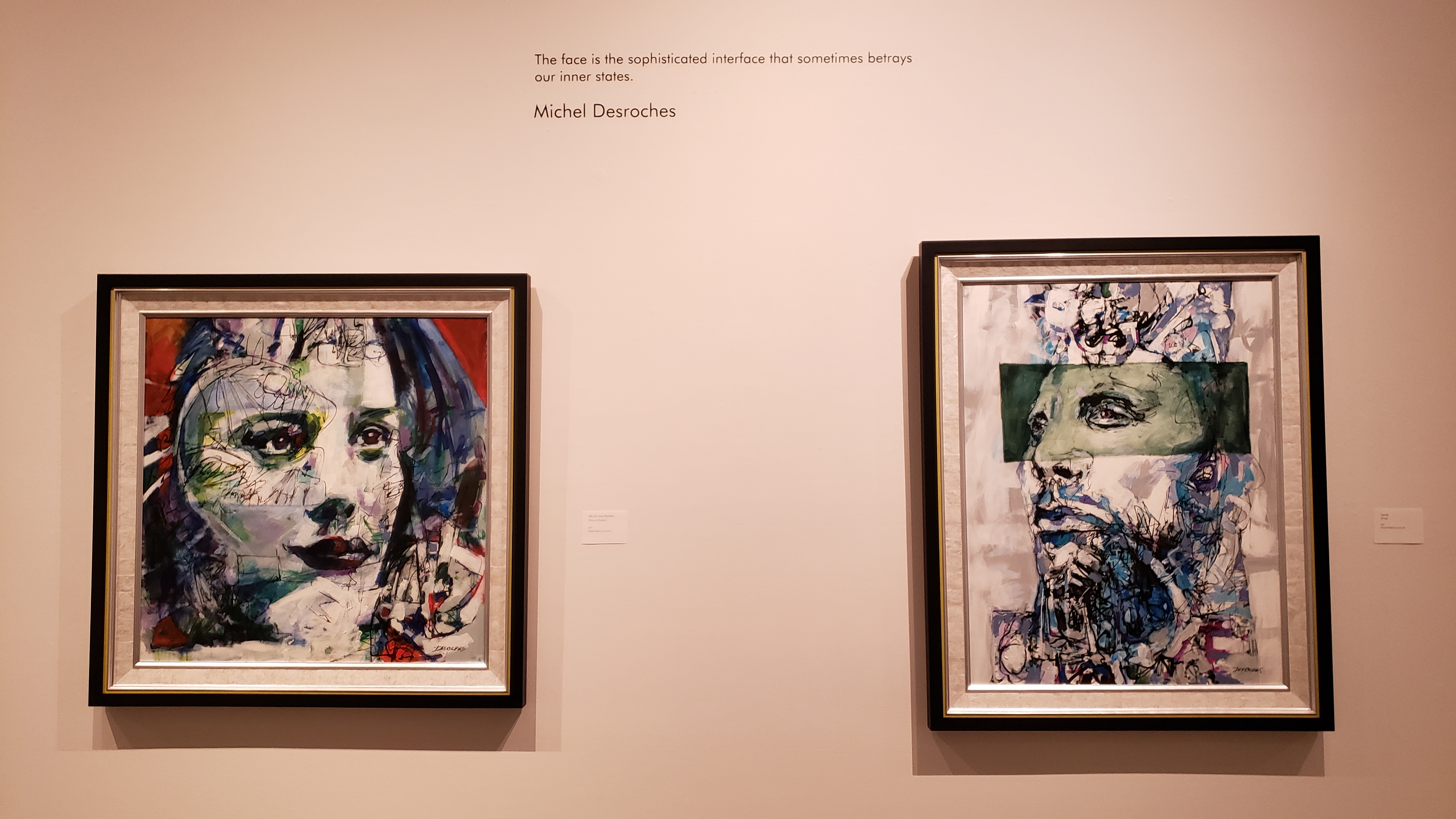
Written by Bryan Knicely
Executive Director, Yellowstone Art Museum
Intensely expressive is the accurate term to use regarding the artwork of Michel T. Desroches. In the Neo-expressionism style, he has a strong desire to communicate and represent that which has no physical form with his intense subjectivity and what appears to be a rough handling of his brush or pen. Depicting primarily faces, his paintings are not portraits of people but rather appearances of one’s hopes, dreams, emotions, and other fleeting moments across time.
First impressions may not always be what they appear. The first time I met Desroches, he arrived like a whisper with sketchbook in hand. A quick “bonjour” and he opened up much like opening his sketchbook to reveal his penetrating personality and spirit. He filled the space in the gallery with energy as he viewed his work. His dark clothing made him part of the light and shadows similar to his work hanging on the walls, the same light and shadows building complex relationships in his work…and now his interactions of seeing his work for the first time in this space. Soon after, he showed me the sketch he did on the flight, just one of the many sketches in his book, unveiling his prolific style. The lines must get out of him and onto paper…onto anything.
The lines that Desroches lays on canvas with a proprietary brush and technique are done rapidly and with the intent of capturing the emotion he wants in the painting rather than forming the features of the face. The broad bands and fields of vibrant color are not an attempt to realistically portray the human face, but rather to communicate fleeting and transitory emotional concepts. Desroches commented, “The presence of the line in my practice is a celebration of feverish gesture through a fragile trace of emotion.” To witness this in person is quite remarkable. In a demonstration, the observer watches lines stretch across the plain of a sheet of paper. Intent on comprehending the strokes, you will quickly experience the lines transforming into faces, often multiple faces, and you are drawn into the piece by the emotion you see and feel coming across in the work.

Desroches settled upon faces as the evident subjects of his paintings because humans instinctively engage in emotion detection upon seeing faces. We learn early in life that an individual’s emotions are most obviously portrayed in their facial expressions and the detection of those emotions becomes innate and intuitive. Thus, Desroches triggers the viewer’s emotional receptiveness by roughly shaping his depictions into the form of a human face. Portraying almost exclusively faces, Desroches states, “The observation of the human face is conducive to subjectivity. The look and mood that emerge from it offer an infinite range of attitudes and emotions. WE all apply emotion detection when seeing a face, it is instinctive. This spontaneous interpretation often reveals an inner state. This identification of emotion creates an attachment.” Walking into the gallery, the faces emerge from the canvases, sometimes quickly as portraits, sometimes slowly as seen in his work entitled, Between the Lines. One, two…five, six, seven, maybe more. First the faces…then the emotions follow.
Desroches’ desire to portray intense emotions originated largely from his work as an art therapist with people suffering from mental and emotional illness. In their faces, he often saw a rapid cacophony of intense naked emotion – both simple and complex – as well as the simultaneous dichotomy of suffering and strength exposed in their countenances. “The face is the sophisticated interface that sometimes betrays our inner state. Drawing a human face is a challenge for me. The presence of the soul is paramount.” That quote comes directly from Desroches and is at the core of his expression of emotion in every piece rather than morphological similarity. It will take you a moment, however you will feel the varying emotional state of each face, triggering even your own emotional reaction. Fear, loss, dismay, joy, coyness, euphoria, pensiveness, daydreaming, mystery, and the list goes on as you experience the faces up close and personal. You know these faces. Through human emotions, we all have been these faces, and your own emotional triggers bring you back to your own experiences. Desroches reveals what we all live, reminding us that we all fluctuate constantly.
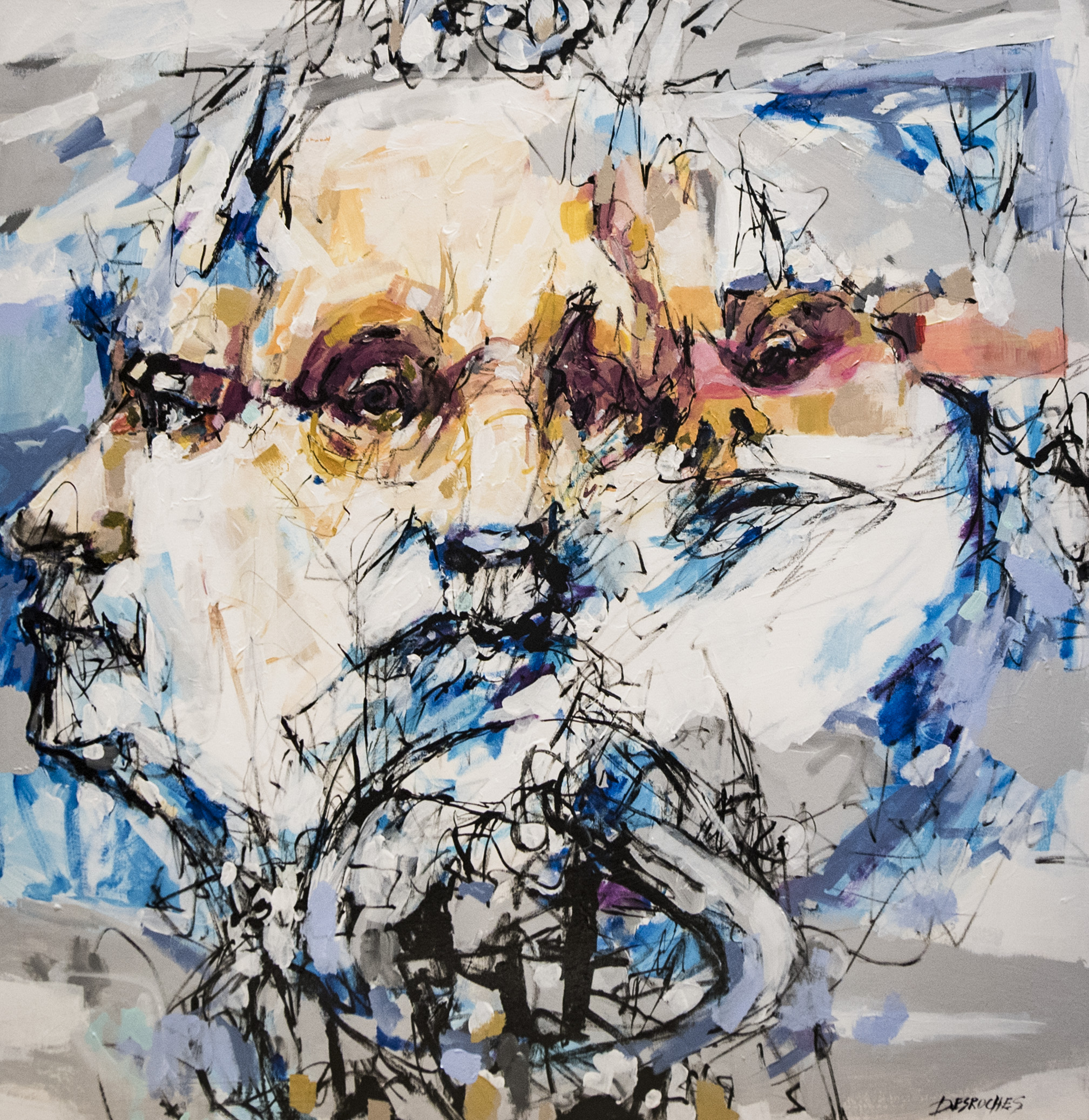
Secance
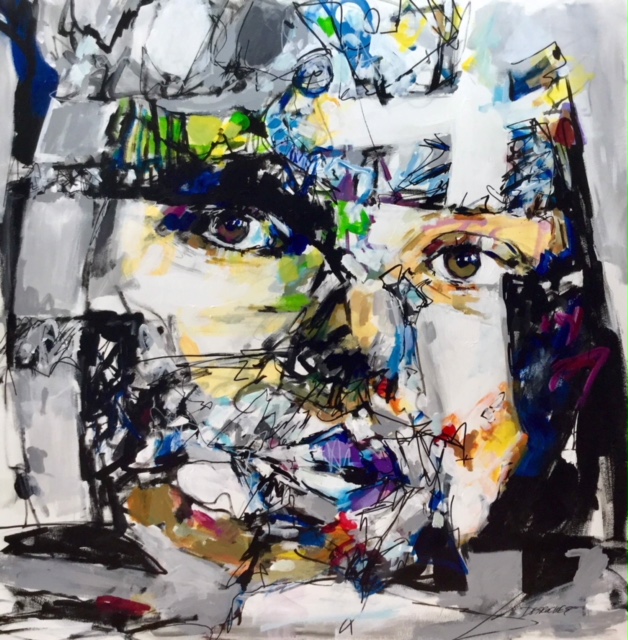
Region Nomade
Though Desroches’ style originates in Art Brut and is heavily influenced by both symbolism and fauvism, it is entirely unique, defying simplistic categorization. This is very much by design as the artist seeks to challenge artistic and stylistic norms in his work. Desroches considers himself a symbolist in the sense that the image transcends the representation of the face alone. Through his drawing, he is able to achieve montages of faces into one single work. It appears effortlessly complex in the moment as they mystically appear. Desroches works with color, however he is aware of the intrinsic emotions associated with specific colors, and he balances them perfectly together. He has shared the emotions of some while identifying his own emotions and those of others. Desroches conveys these emotions with the viewer in hopes that you, too, will feel the same emotion as seen in his subjects.
The choice of abstraction allows intuition to take its full measure, it is a vector that reflects the unconscious. Released from figurative rationality, the line follows an improvised way, guided by the singularity of each creation in a style forged with experience that deeply inhabits the artist. The lines create sensitive shapes that render the encounter a continuity, the thread that drives the artist, with the fleeting emotion of the moment. Desroches captures and reflects his creative presence through his actions on the canvas. His drawings are halfway between two- and three-dimensions, organic meets geometric, abstraction mimics a dance without repeating the same movement twice. It is obvious that he finds many connections between drawing and music, his being the virtual melody.
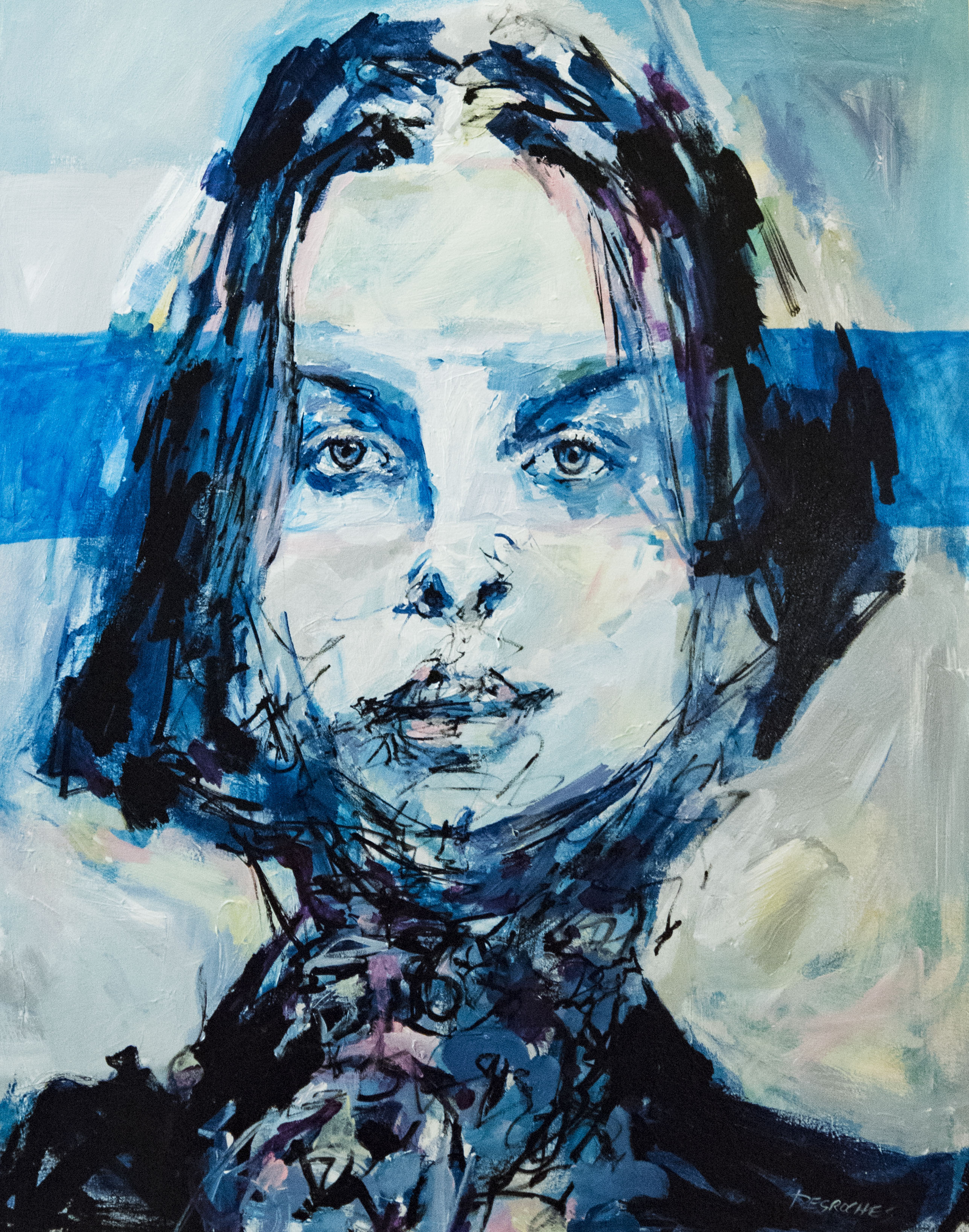
Who Are You?
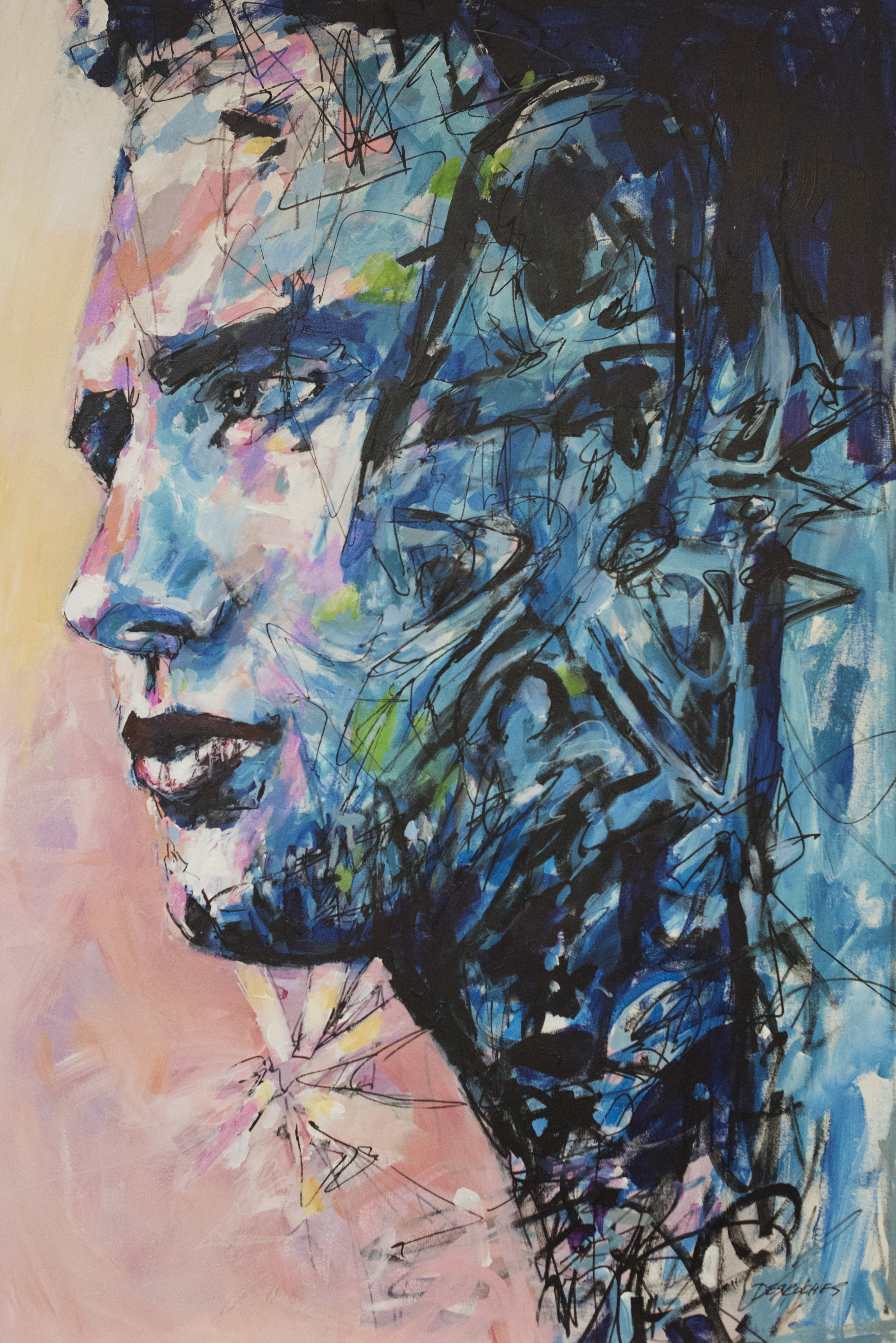
I Am No Stranger to the Strange
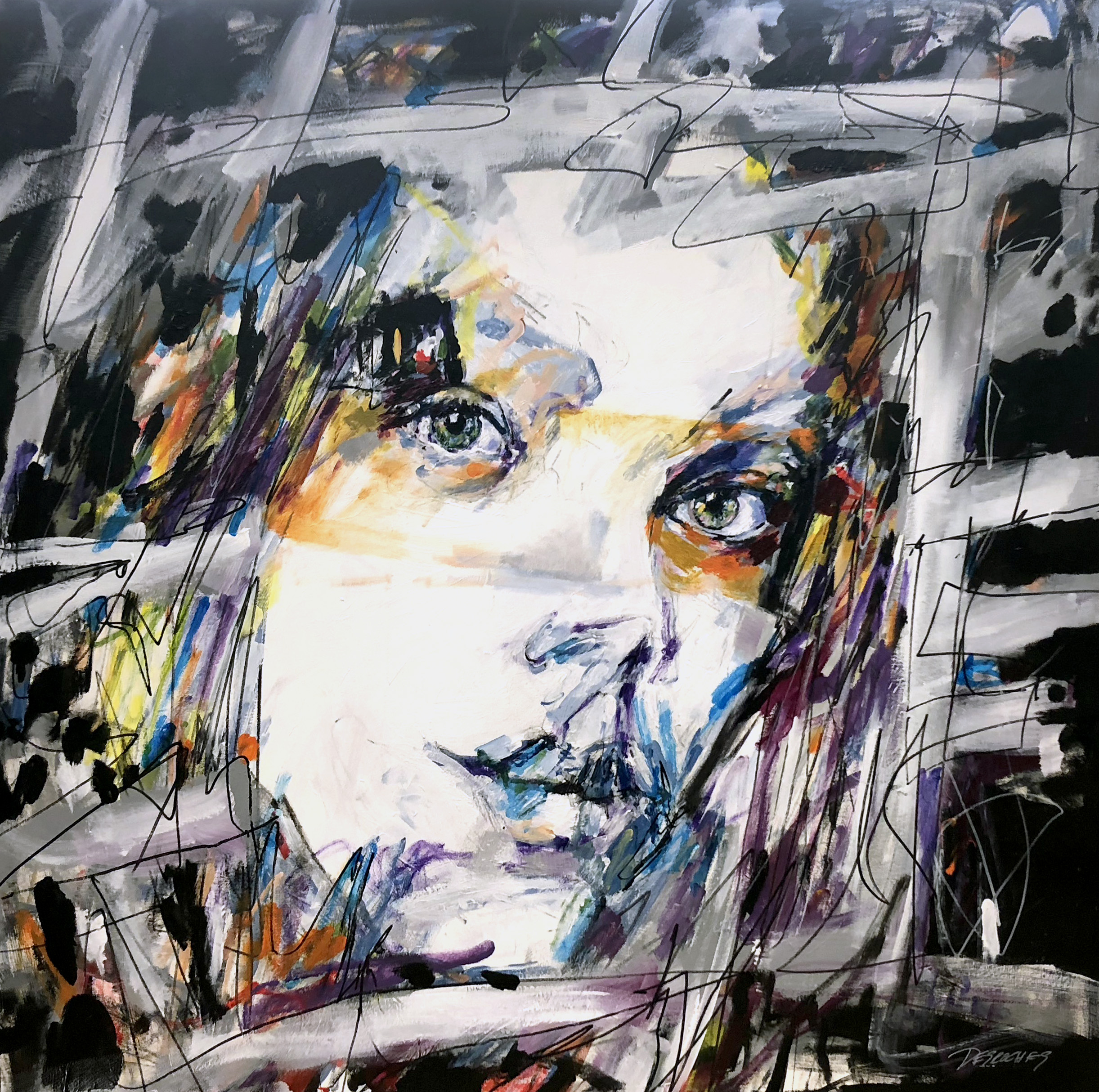
La Choise
Desroches is a native of Montreal, Canada, and he began his artistic career as a self-taught artist doing what you might refer to as abstract improvisation. He later pursued a bachelor’s degree in visual and media arts at the University of Quebec at Montreal. His dozens of exhibitions have taken his work across the globe from the Louvre in Paris, as part of the prestigious Salon des Beaux Arts, to the Yellowstone Art Museum in 2019…and beyond. He works daily and is motivated by a strong aesthetic exploration of both figurative and abstract work. Always intending to make the inner voice visible, Desroches is not limited to the representation of that which lies between the lines. Rather, he superimposes abstract over representation. His artistic journey is the progressive symbiosis of entity and creation, leading inevitably to the enhancement of both. As an art therapist, he uses his work with people to help them find their balance through artistic expression. All of us can benefit from that. -